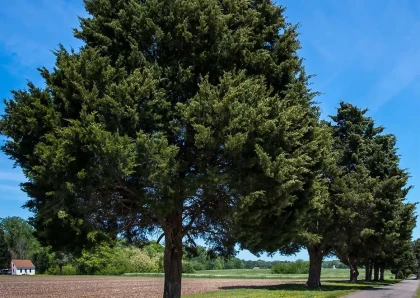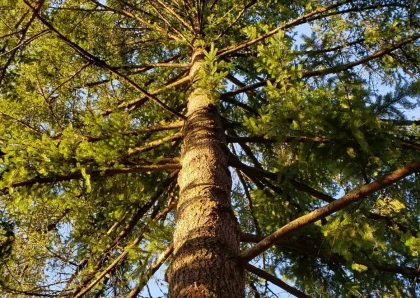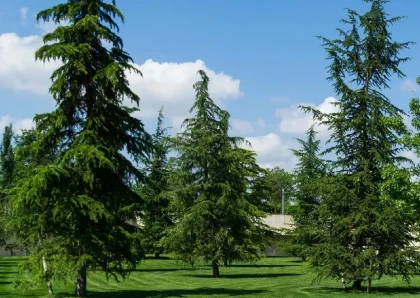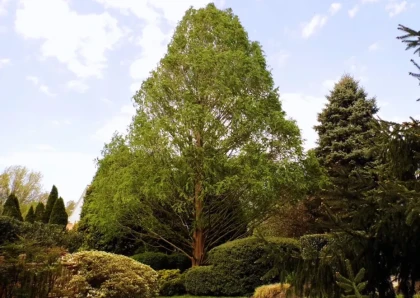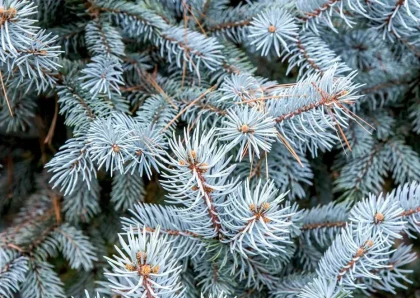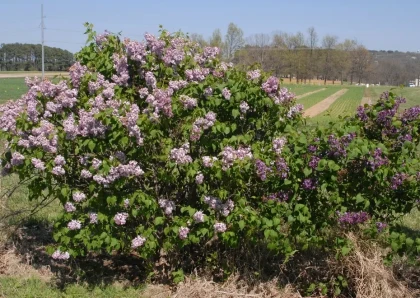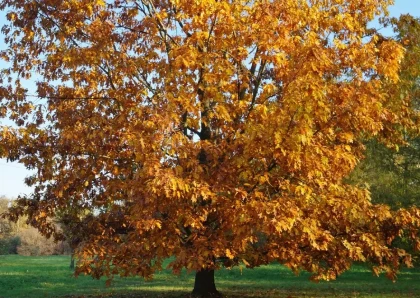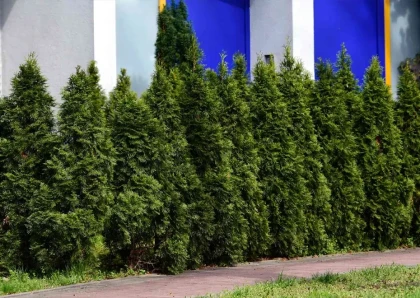
White Spruce Tree
Overview
White Spruce Tree
White spruce, scientifically known as Picea glauca, is a species of coniferous tree belonging to the Pinaceae family. It is a medium to large-sized tree native to North America, specifically found in the northern regions of the United States and Canada, as well as parts of Alaska. The tree is also known by other common names such as Canadian spruce, skunk spruce, and Black Hills spruce.
Appearance: White spruce is a coniferous evergreen tree with a straight, tall trunk that can reach heights of 40 to 100 feet (12 to 30 meters) or more. In dense forests, the tree tends to have a narrow, spire-like crown, while trees grown in more open spaces may have broader crowns.
Needles: The needles of white spruce are short, stiff, and sharp, measuring about 0.5 to 0.75 inches (1.3 to 1.9 cm) long. They are arranged individually on the branches, and their color ranges from bluish-green to grayish-green, giving the tree its characteristic "white" appearance.
Cones: White spruce produces both male and female cones on the same tree. The cones are cylindrical in shape, usually 1.5 to 2.5 inches (4 to 6 cm) long, and have thin scales. They start off green and mature to light brown when they are ready to release their seeds.
Range: White spruce is commonly found in northern temperate and boreal forests of North America. Its range extends from the northernmost parts of the United States, such as Alaska, Minnesota, and Maine, through Canada, reaching as far north as the Arctic Circle.
Habitat: This tree species is well-adapted to cold climates and is often found growing in moist to wet soils, such as swamps, bogs, and along riverbanks. It can also tolerate a wide range of soil types, from sandy to clayey.
Importance: White spruce is commercially valuable and widely used in the timber industry for various purposes, including lumber, pulp, and paper production. It is also planted as an ornamental tree in landscapes and gardens due to its attractive appearance.
Wildlife: The tree provides important habitat and food for various wildlife species. Birds, such as crossbills and chickadees, feed on the seeds found in the cones. Moose and other herbivores browse on the tree's needles and twigs.
Climate Change: White spruce populations have been affected by climate change, particularly in their southernmost range. Warmer temperatures and changes in precipitation patterns can influence their growth and distribution.
Common Varieties
- Picea glauca var. albertiana: Also known as the Alberta White Spruce.
- Picea glauca var. densata: Commonly referred to as the Black Hills White Spruce.
- Picea glauca var. porsildii: Often called Porsild White Spruce.
Hybrid Varieties
- Picea glauca × Picea engelmannii: Hybrid of White Spruce and Engelmann Spruce.
- Picea glauca × Picea mariana: Hybrid of White Spruce and Black Spruce.
Wood Products from White Spruce Tree
Construction and Building Materials
- Dimensional Lumber
- Boards and Planks
- Plywood
- Timber Beams
- Roof Trusses
- Wall Framing
Interior and Furniture
- Interior Paneling
- Flooring
- Cabinets
- Tables and Chairs
- Doors and Windows
Pulp and Paper
- Newspaper
- Magazine Paper
- Printing Paper
- Cardboard
Other Wood Products
- Wooden Toys
- Wooden Utensils
- Wooden Pallets
Benefits of White Spruce Tree
1. Environmental Benefits
- Carbon Sequestration: White Spruce trees absorb and store carbon dioxide, helping to mitigate climate change.
- Wildlife Habitat: The tree provides essential habitat and food for various wildlife species.
- Soil Erosion Prevention: White Spruce roots help stabilize soil, reducing erosion and protecting waterways.
2. Commercial and Industrial Uses
- Lumber Production: White Spruce is a valuable timber species used for construction and various wood products.
- Pulp and Paper: The tree's wood is used to produce pulp for paper and cardboard manufacturing.
- Wood Products: White Spruce wood is used in furniture, paneling, flooring, and other interior applications.
3. Aesthetic and Recreational Benefits
- Landscaping: White Spruce is planted as an ornamental tree in parks, gardens, and landscapes for its attractive appearance.
- Recreational Spaces: The presence of White Spruce in forests and parks provides recreational opportunities like hiking and birdwatching.
4. Biodiversity and Ecology
- Forest Ecology: White Spruce is a key species in northern temperate and boreal forests, contributing to ecosystem diversity.
- Succession: The tree plays a role in forest succession, regenerating and establishing new forests after disturbances.
Cons of Using White Spruce Tree
1. Susceptibility to Pests and Diseases
- Bark Beetles: White Spruce is vulnerable to attacks from bark beetles, which can cause significant damage to the tree.
- Needle Cast Diseases: Various needle cast diseases can affect the tree, leading to defoliation and reduced growth.
2. Limited Drought Tolerance
- White Spruce is not well-suited to dry or drought-prone regions, as it requires consistent moisture for healthy growth.
- During extended periods of drought, the tree may become stressed and susceptible to other issues.
3. Vulnerability to Wind Damage
- The tree's shallow root system can make it more susceptible to windthrow during severe storms.
- Wind damage can lead to uprooting or breakage of branches, affecting the stability and appearance of the tree.
4. Slow Growth Rate
- White Spruce typically has a slow growth rate compared to some other tree species.
- This slow growth can affect its commercial value in terms of timber production.
5. Allergenic Potential
- Some individuals may be sensitive to the tree's pollen, which can trigger allergies in certain regions and seasons.
- Proximity to White Spruce trees may cause respiratory issues for sensitive individuals.
Tips for Planting and Maintaining White Spruce Tree
1. Choosing the Right Location
- Plant the White Spruce in a location with full sunlight for optimal growth.
- Ensure the soil is well-draining and has good moisture retention.
- Select a site with enough space for the tree to reach its mature size without overcrowding.
2. Planting
- Plant the White Spruce in the spring or fall when the soil is workable and temperatures are mild.
- Dig a hole that is slightly wider and the same depth as the root ball or container.
- Remove any wrapping or container from the root ball before planting.
- Backfill the hole with soil and water thoroughly to eliminate air pockets.
3. Watering
- Keep the newly planted White Spruce well-watered during its first growing season.
- Established trees generally require about 1 inch of water per week, especially during dry periods.
- Water deeply and avoid frequent shallow watering to encourage deep root growth.
4. Mulching
- Apply a layer of organic mulch around the base of the tree, but avoid piling it against the trunk.
- Mulching helps retain moisture, control weeds, and regulate soil temperature.
5. Pruning
- Prune the White Spruce sparingly and only to remove dead or damaged branches.
- Prune in late winter or early spring before new growth begins.
- Avoid heavy pruning, as White Spruce tends to have a naturally dense and attractive shape.
6. Protection from Pests and Diseases
- Inspect the tree regularly for signs of pest infestation or diseases.
- Take prompt action if any issues are detected, such as applying appropriate treatments or seeking professional advice.
Conclusion
The White Spruce (Picea glauca) is a valuable and iconic tree species with numerous ecological, economic, and aesthetic benefits. As a native of North America, it thrives in cold climates, providing important habitat for wildlife and contributing to the biodiversity of northern temperate and boreal forests.
The commercial value of the White Spruce is significant, with its wood being used for various construction purposes, pulp and paper production, and interior applications such as furniture and flooring. Moreover, the tree is also appreciated for its ornamental qualities and is often planted in landscapes and recreational spaces for its attractive appearance.
While the White Spruce offers numerous advantages, it does have some drawbacks, including susceptibility to pests and diseases, limited drought tolerance, and a relatively slow growth rate. Proper care and management, such as choosing the right planting location, regular watering, and monitoring for potential issues, can help mitigate these challenges.
Overall, the White Spruce Tree holds a significant place in North American ecosystems, providing both environmental and economic benefits. Its adaptability, beauty, and contribution to the timber industry make it a valued and cherished tree species across its native range.
FAQs
1. What is the scientific name of the White Spruce Tree?
The scientific name of the White Spruce Tree is Picea glauca.
2. Where is the White Spruce Tree commonly found?
The White Spruce Tree is native to North America and is commonly found in the northern regions of the United States and Canada, as well as parts of Alaska.
3. What are the uses of White Spruce wood?
White Spruce wood is used for various purposes, including construction (lumber, plywood, beams), pulp and paper production, furniture, interior paneling, and flooring.
4. How tall does the White Spruce Tree grow?
The White Spruce Tree can reach heights of 40 to 100 feet (12 to 30 meters) or more, depending on environmental conditions and growing conditions.
5. Is the White Spruce Tree evergreen?
Yes, the White Spruce Tree is an evergreen coniferous tree, meaning it retains its needles throughout the year and does not shed them in the fall.
6. How can I care for a White Spruce Tree in my yard?
To care for a White Spruce Tree, choose a sunny location with well-draining soil, water it regularly, especially during its first growing season, and apply a layer of mulch around the base to retain moisture and control weeds. Prune sparingly, and monitor for signs of pests and diseases.
7. Is the White Spruce Tree resistant to pests and diseases?
While the White Spruce Tree is generally hardy, it can be susceptible to pests like bark beetles and diseases like needle cast diseases. Regular monitoring and proper care can help mitigate these issues.
8. Can I use White Spruce wood for outdoor projects?
White Spruce wood can be used for outdoor projects, but it is not as naturally durable as some other species. To enhance its longevity, consider applying protective coatings or treatments.




